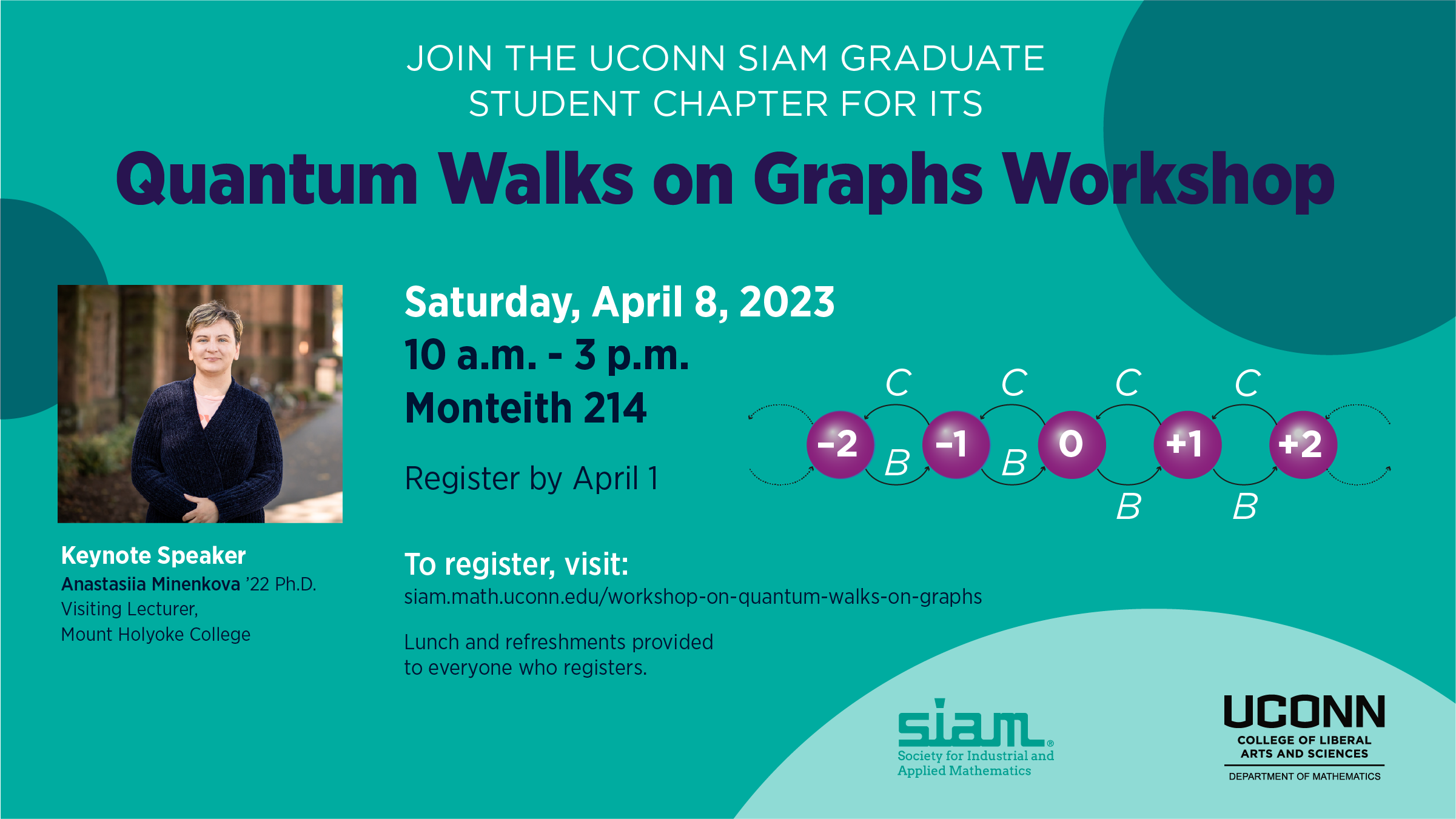
Details
When: April 8th from 10 am to 3 pm
Where: Monteith 214
This will be an introductory workshop for the mathematically inclined. Lunch, coffee, and refreshments will be provided.
Sign-Up: https://forms.gle/WVMNw9zNLRUm9ZnK8
Schedule:
9:30-10:00 Breakfast
10:00 - 10:50 Corrie's Talk
11:10 - 12:00 Kim's Talk
12:00 - 1:00 Lunch
1:00 - 1:50 Rachel's Talk
2:10 - 3:00 Anastasiia's Talk
Key-note speaker: Anastasiia Minenkova
In this talk we will discuss the connections between linear algebra, orthogonal polynomials, probability, and spectral theory on graphs in the context of quantum computations.
Additional Talks
Getting to Know Where We're Quantum Walking: An Introduction to Graph Theory, Corrie Ingall
In this talk we will provide a quick introduction to the terms and concepts in Graph Theory that will be relevant for the rest of the talks in the workshop. Graph Theory is not a standard course in the mathematics curriculum, so we will make sure everyone attending is on the same page and comfortable with both the language and the perspective of Graph Theory. By the end of the talk, we hope everyone will have a greater understanding on why exactly graphs are so powerful and be familiar with a few applications on how graphs are useful tools (and subjects of study) in both applied and pure mathematics.
Spectral Theory in Graphs, Kimberly Savinon
The Spectral Theorem provides a result for when a matrix or operator can be diagonalized. This naturally gives a decomposition that is computationally useful. A discussion on the applications of this theorem to graphs and quantum mechanics will be included. Additionally, we will investigate the properties of adjacency and Laplacian matrices in connection to their spectrum.
Orthogonal Polynomials and Quantum Walks on Graphs, Rachel Bailey
This talk will give a brief overview of some of the ways the theory of orthogonal polynomials has been used to study quantum walks on graphs. We will start by defining orthogonal polynomials and then review some of their nice properties. We will then use these properties to study perfect state transfer in path graphs on vertices.